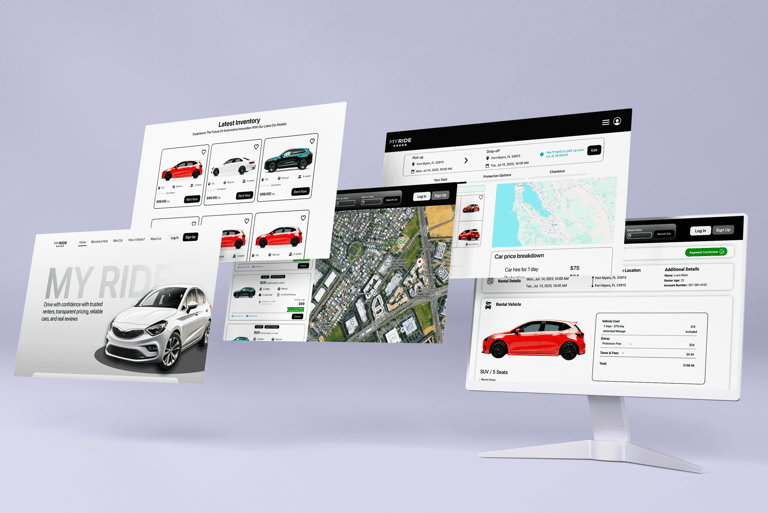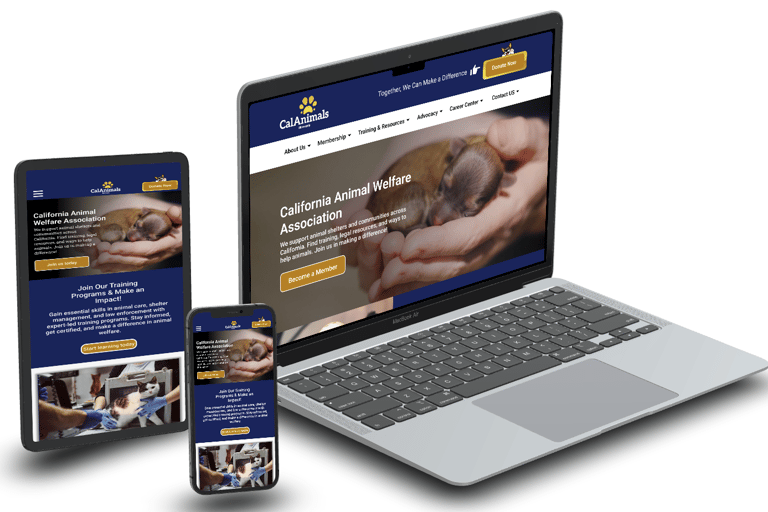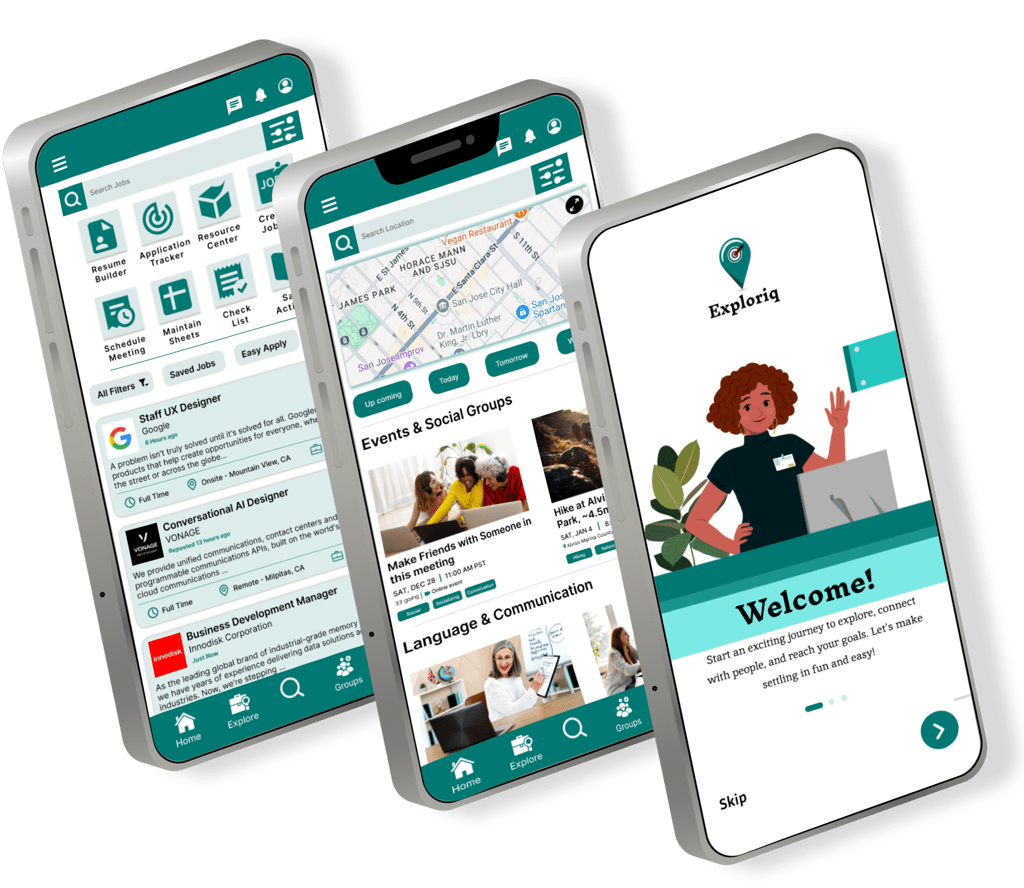

Exploriq
Exploriq is a mobile app that helps people who are new to a place. It makes it easier to find jobs, explore the city, join local events, and meet new friends — all in one app.
My Role
Duration
Tools
Prototype Link
Lead Ux Designer
5 Weeks
Figma, Google forms, Google slides, Jira, Slack, Adobe Photoshop
Overview
Problem
Goal
When people move to a new place, they often feel lost and alone. They don’t know how to find a job, make friends, or understand the local culture. Adjusting can be difficult without the right support and information.
The goal of Exploriq is to help people who are new to a place feel more comfortable and confident. The app makes it easier to find jobs, meet new people, join local events, and explore nearby places. It also provides helpful tips about daily life — such as transportation, and local culture — so newcomers can adjust smoothly and feel at home faster.
Research
User Interviews
We conducted interviews and conversations with newcomers to better understand their needs and challenges when moving to a new place. Our research focused on three main goals:
Research Summary
2 one-on-one interviews
10+ insights gathered from empathy mapping & secondary research
100% said the cost of living was a major challenge
80% felt lonely or had trouble making new friends
90% struggled with the job search process
Most relied on Google or social media but still felt lost
What newcomers find most difficult when settling into a new city
How they currently try to adjust, find jobs, and make social connections
What kind of support or tools would help them feel more at home
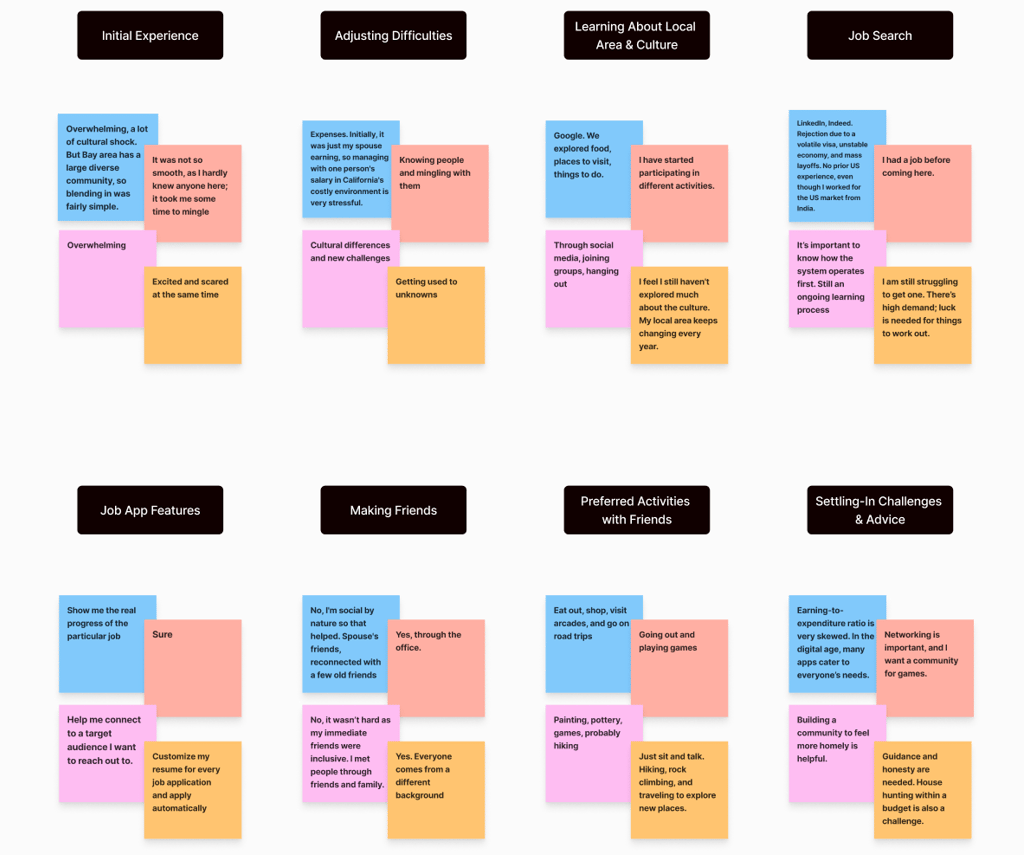

Affinity Diagram
We used an affinity diagram to group similar responses from our interviews. This helped us clearly identify the problems newcomers face, such as job struggles, loneliness, and difficulty finding local support. It also made it easier to decide which features the app should include.
Key Takeaways from Affinity Map:
Newcomers feel confused and overwhelmed in a new place.
It’s hard to make friends without knowing anyone.
High living costs make daily life stressful.
Finding a job is tough, and many want help with resumes and job tracking.
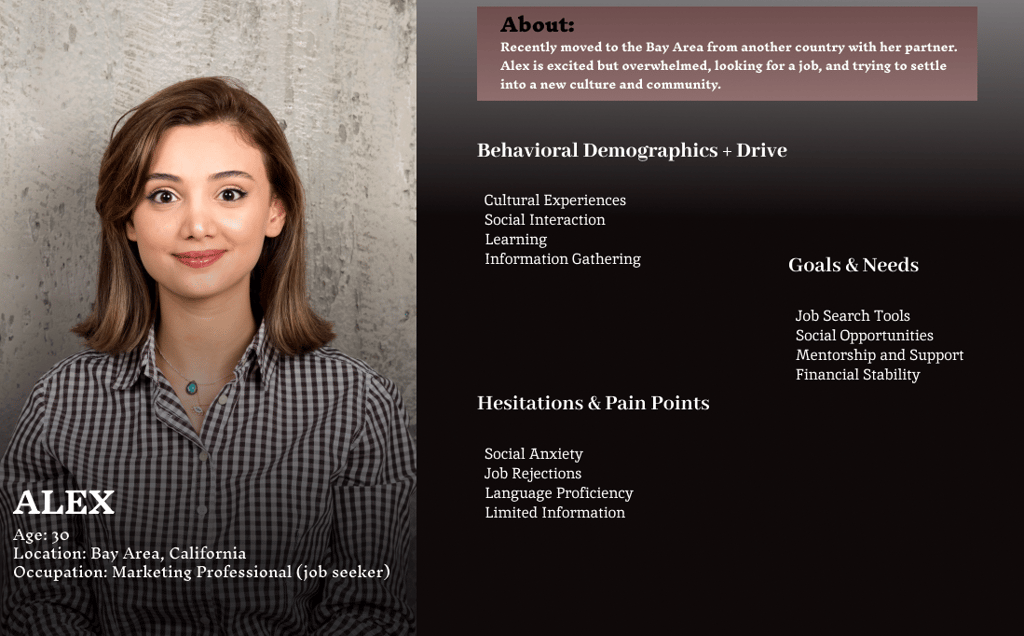

User Persona
After grouping similar thoughts and experiences from the interviews using an affinity map, we created a fictional user named Alex. She represents real people who are new to a place and feel lost or uncertain. This persona helped us stay focused on the real problems and needs of newcomers while designing the app.
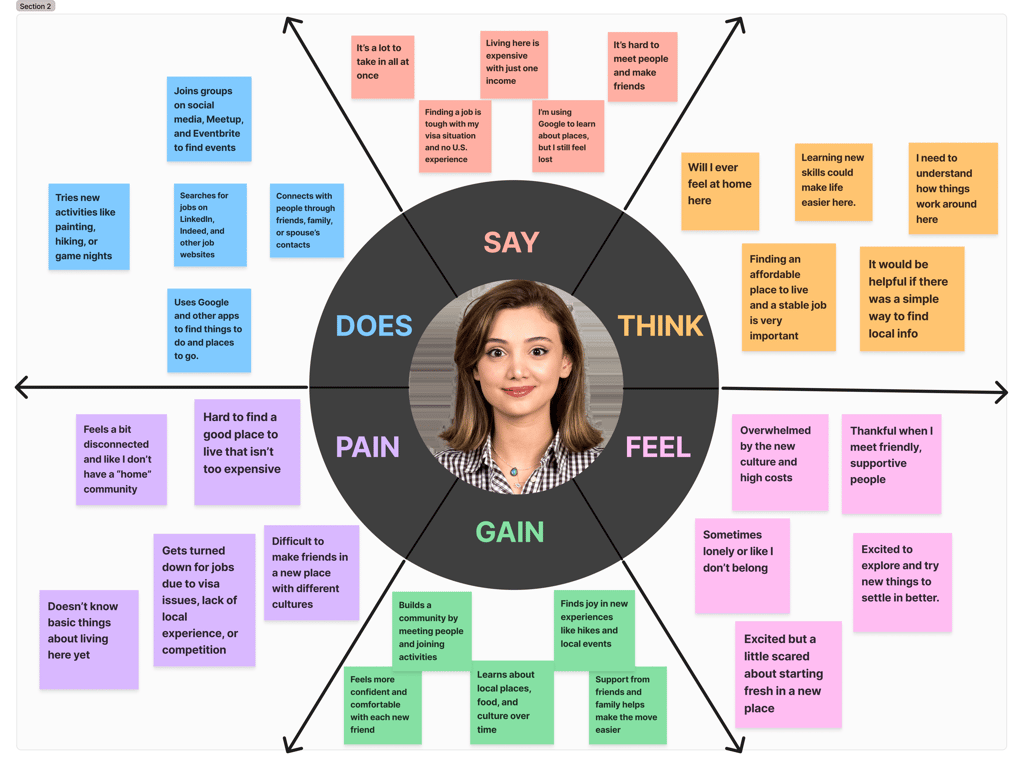

Empathy Map
Then, we created an empathy map to better understand Alex’s feelings and thoughts. We examined what she says, does, thinks, and feels. This helped us step into her shoes and better understand her emotions, struggles, and the kind of support she needs.
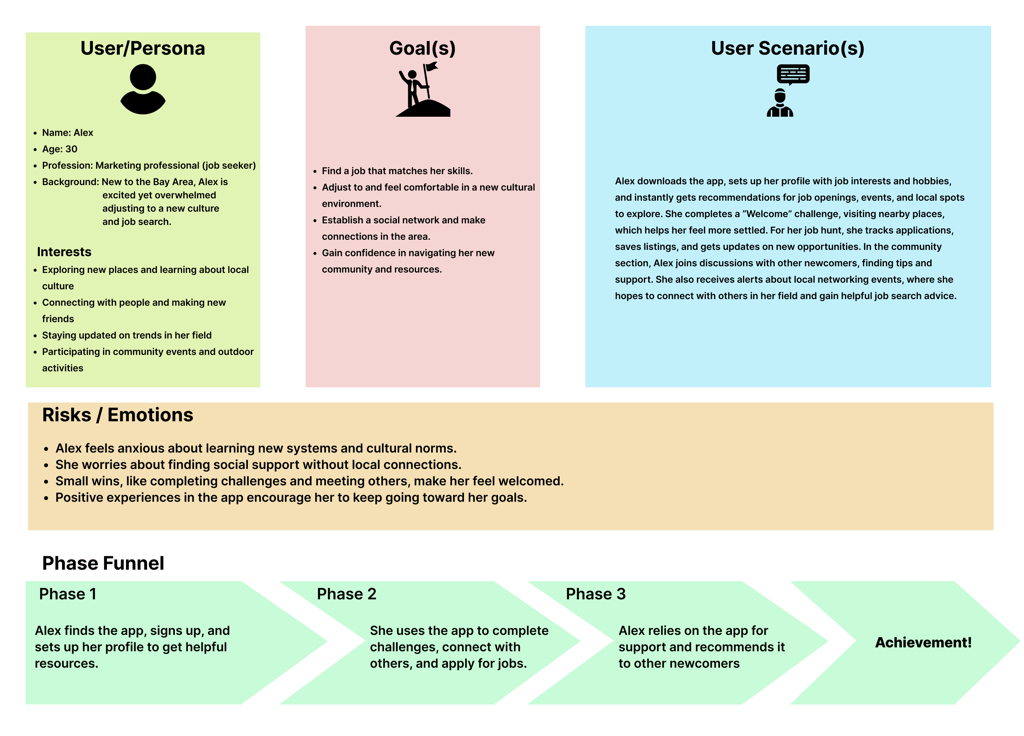

User Scenario
Next, we wrote a short story, or user scenario, showing how Alex might use the app in her daily life. For example, she might open the app to find job support, attend events, or meet new people. This helped us consider real-life situations and identify useful features for the app.
Key Takeaways :
An easy start helps users feel comfortable.
Challenges make learning fun.
Having everything in one place saves time.
Talking with others builds a sense of support.
Clear steps keep users on track.
Positive experiences encourage continued use.
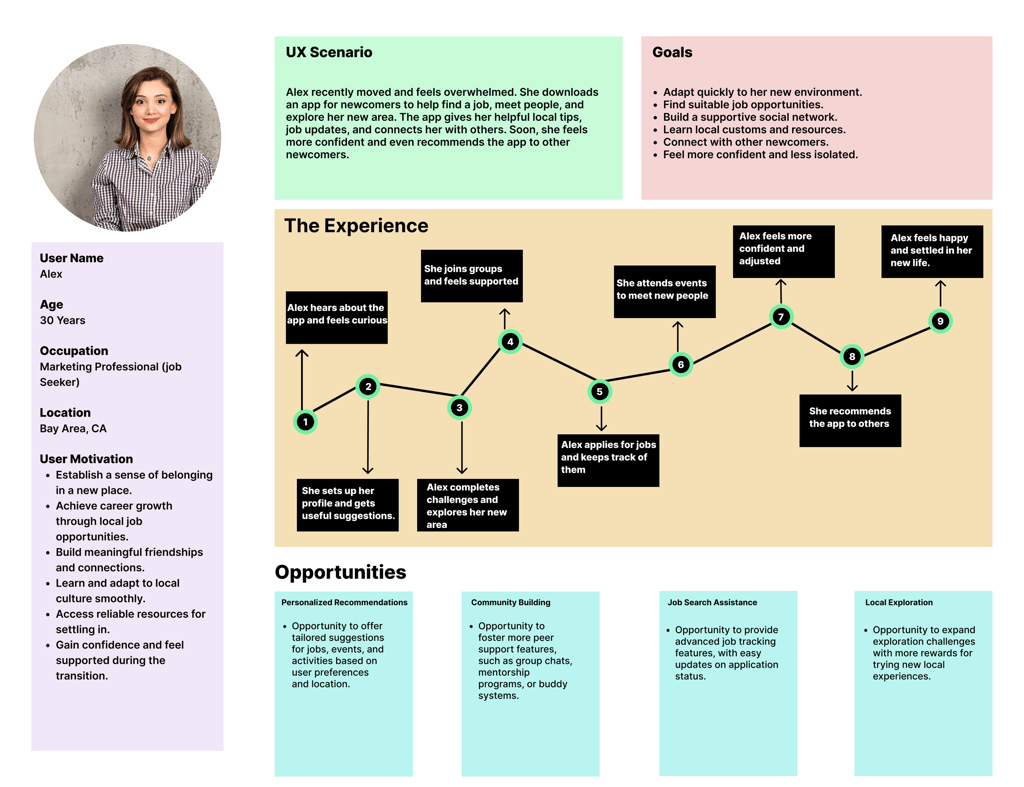

User Journey Map
Finally, we created a user journey map that shows the steps Alex goes through — from arriving in a new place to feeling more comfortable. We included what she does, how she feels, and where she encounters challenges. This helped us identify ways to improve her experience and make it easier with the app.
Key Takeaways :
Alex becomes curious about the app.
An easy setup helps her get started.
Helpful suggestions make her feel supported.
Meeting others makes a big difference.
Job tools are useful.
Fun events help her enjoy her new surroundings.
She feels more confident.
Ideation & Strategy
We started by understanding Alex’s challenges as a newcomer. Then, we used tools like 'I Like, I Wish, What If,' the How-Now-Wow Matrix, and the MoSCoW method to brainstorm ideas and select the most useful features. This helped us plan an app that offers job support, local tips, and social connections in a simple and helpful way.
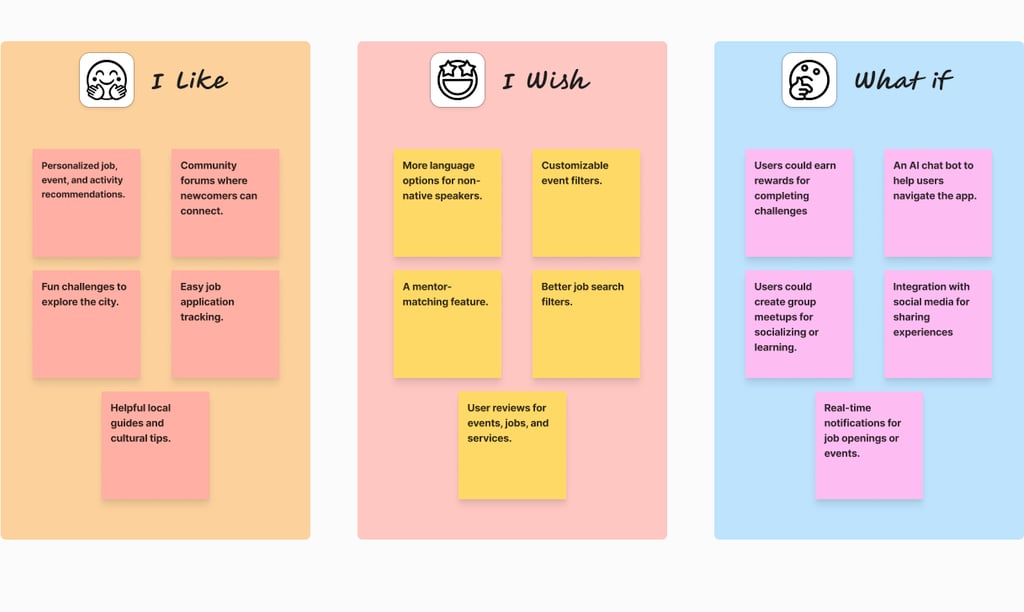

I like, I wish & what if method
We used this method to learn from users.
They liked job tips, fun challenges, and community chats.
They wished for more language options, mentor support, and better filters.
They suggested new ideas like rewards, group meetups, and real-time alerts.
This helped us understand what was working, what needed improvement, and what could make the app even more engaging.
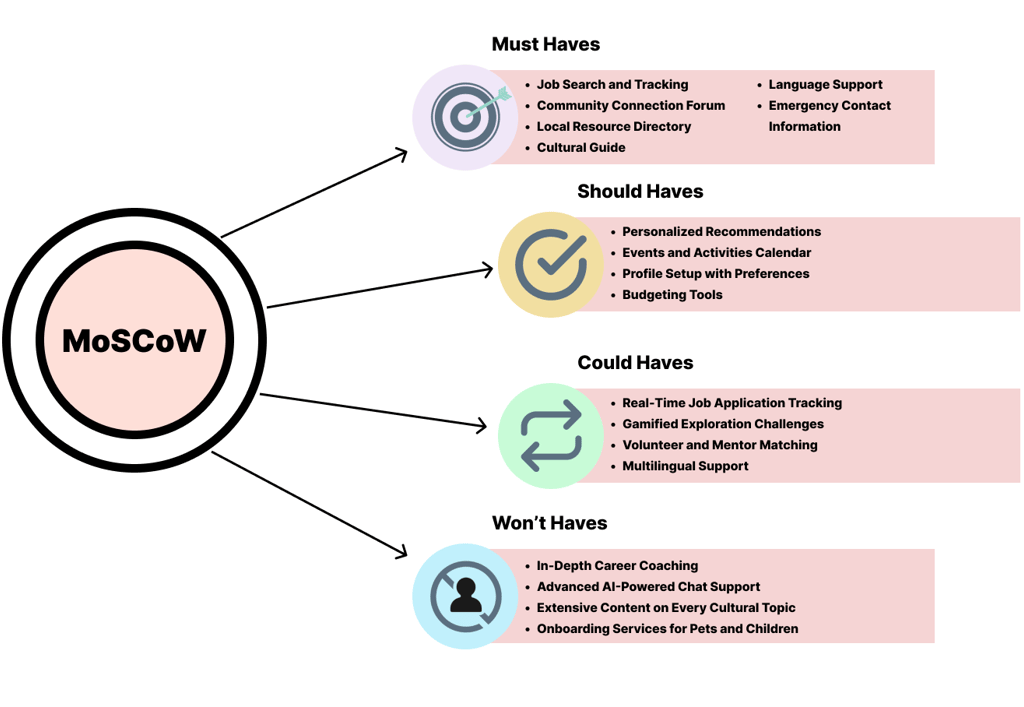

MoSCoW Method
We used the MoSCoW method to prioritize app features based on importance.
Must-Haves are essential, such as job search and community chat.
Should-Haves enhance the experience, like personal tips and event calendars.
Could-Haves are additional ideas, such as fun tasks and mentor matching.
Won’t-Haves are features we chose to skip for now, like career coaching or AI chat.
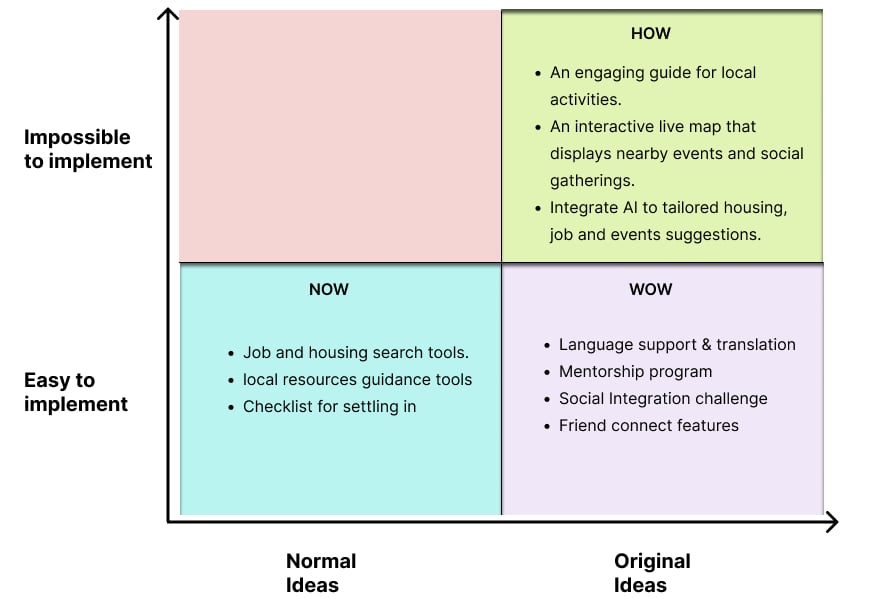

How-Now-Wow Matrix
We used the How-Now-Wow Matrix to organize our ideas based on their originality and ease of implementation.
Now: Simple and useful ideas we can build right away, such as job search tools and local help guides.
How: Creative ideas that need more planning, like AI suggestions and live event maps.
Wow: Unique and feasible features, such as language support, mentor programs, and friend-connect options.
This helped us decide which ideas to build first and which to explore later.
Key ideas:
Job search and resume tools
Event and activity suggestions
Group and community chats
Fun challenges to explore the city
Design & Prototyping
Once we defined our key features, we moved into the design phase—turning ideas into a clear, friendly, and supportive experience that helps newcomers feel at home with ease.
User Flow Chart
This user flow shows how a newcomer like Alex navigates the app — from signing up or logging in to exploring features like job search, group chats, events, and profile setup. It helps us understand the full user journey and ensures the app is simple and easy to use at every step.
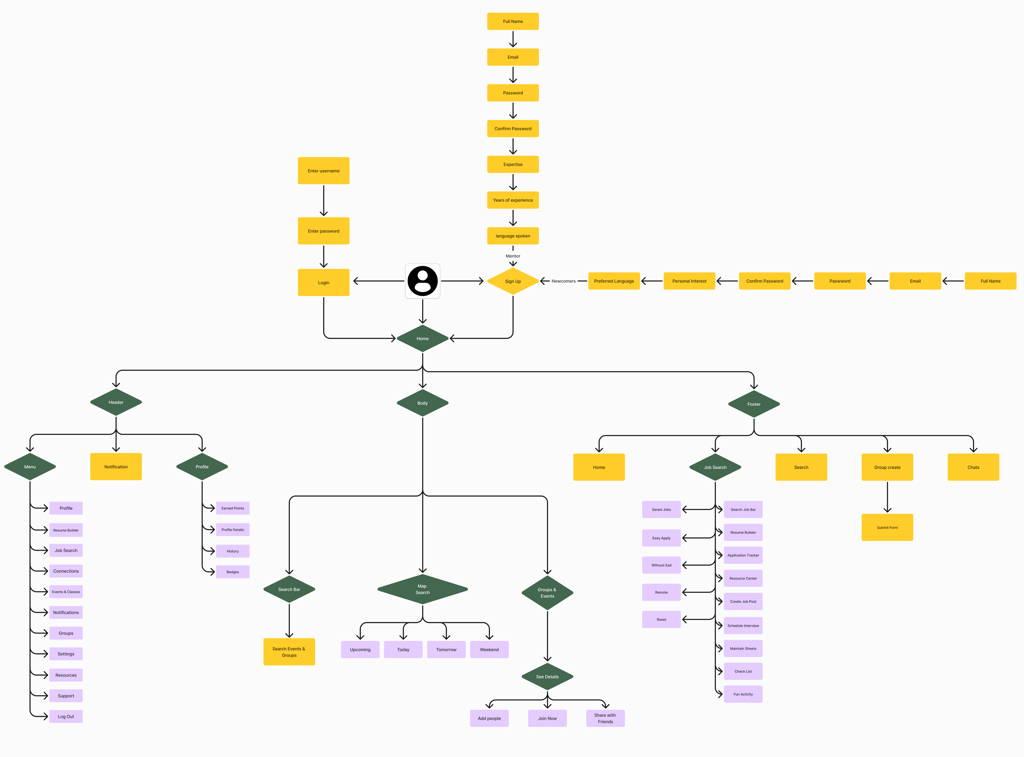

Low-Fidelity Sketches
These wireframes show the basic structure of the app. They helped us plan the layout, main features, and user flow. We focused on simple navigation, job search, events, groups, and onboarding to make the app clear and easy to use from the beginning.
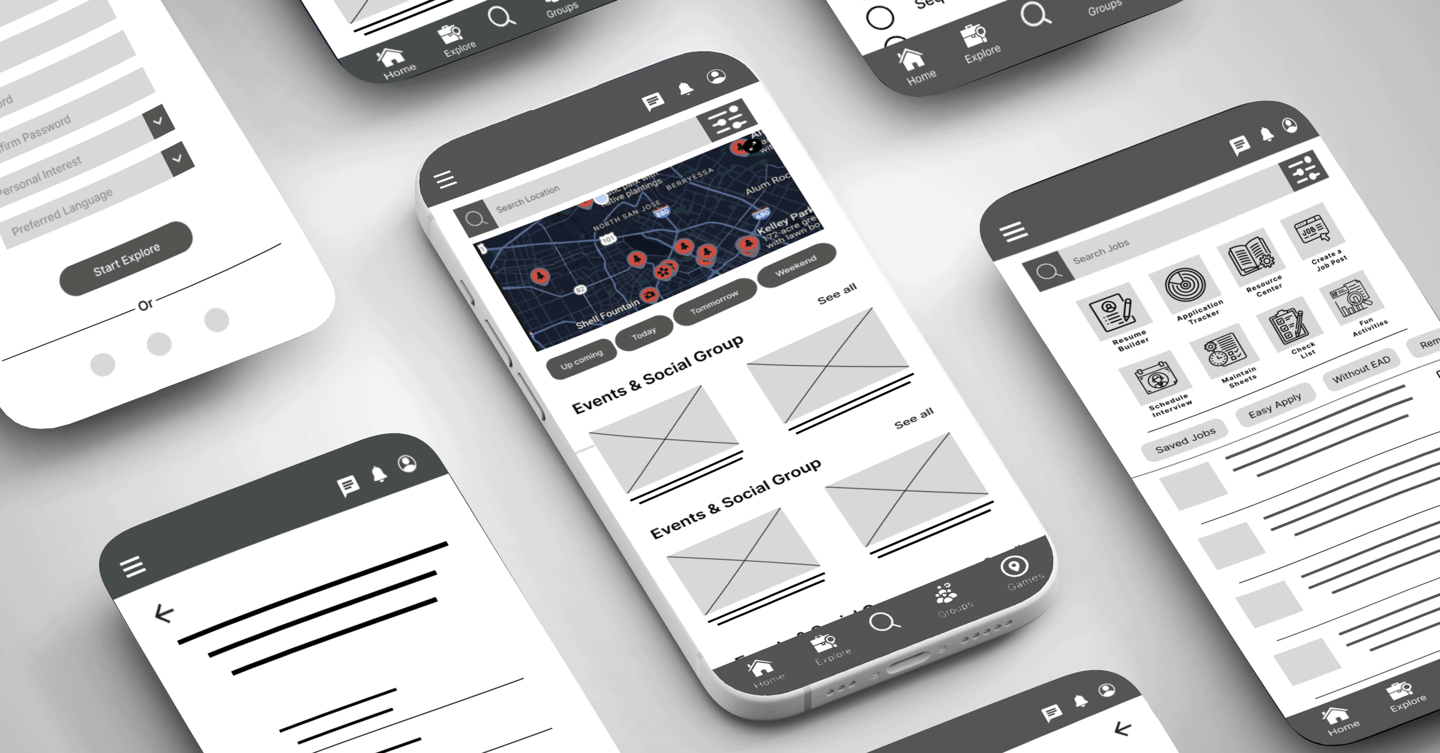

Usability Testing
We tested the app with users to see how easily they could complete tasks such as creating a profile, exploring the home screen, joining a group, and searching for jobs. The goal was to identify any confusing areas and improve the user experience.
Key Changes We Identified:
Issue: Button labels like “Curious” or “Experienced” were unclear.
Change: Replaced with simple terms like “Newcomer” and “Mentor.”
Issue: Some icons were confusing.
Change: Added labels and tooltips for clarity.
Issue: The job section felt mixed with fun activities.
Change: Separated job tools and social activities into different tabs.
High-Fidelity Prototypes
Final Impact
Exploriq helped newcomers like Alex feel more confident and supported. The app made it easier to find jobs, join local events, connect with others, and settle in more quickly. It turned a stressful move into a smoother, friendlier experience.
After testing the wireframes, we designed a high-fidelity prototype with the actual layout, icons, and visuals. It showcases the full look and feel of the app, including job search, group chats, events, onboarding, and maps. The design focuses on creating a clear, friendly, and helpful experience for newcomers.
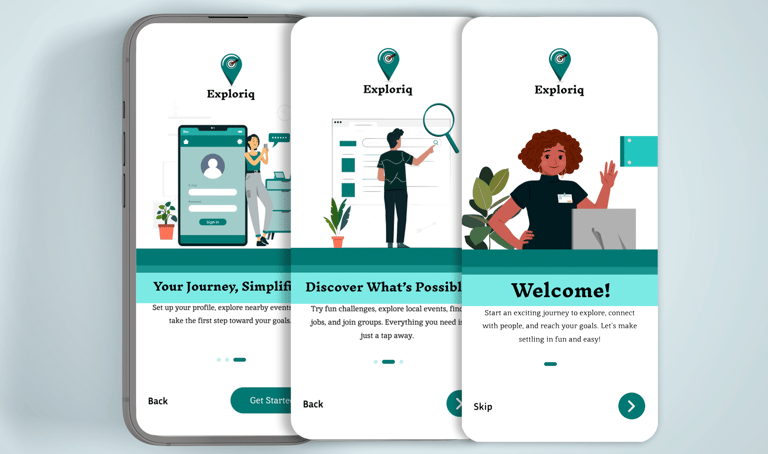

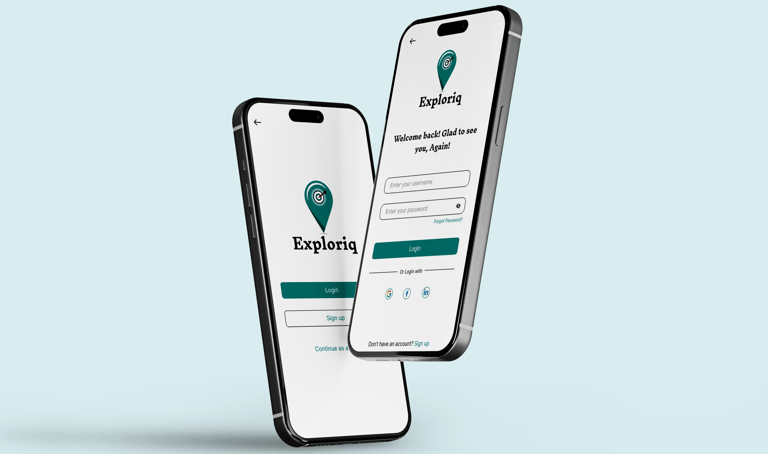

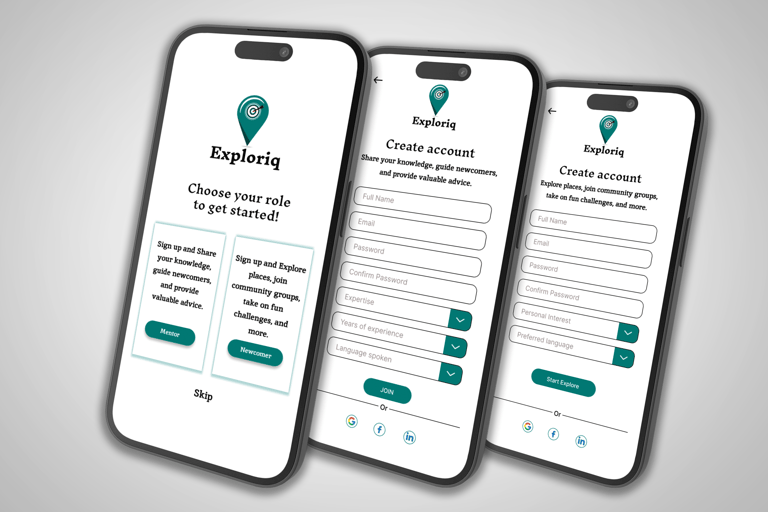

Sign Up Screens
Log In Screens
Welcome Onboard Screens
Reflection & Learning
Through this project, I learned how important it is to design with empathy. Listening to real user stories helped shape better ideas. Small changes — like clearer icons or improved wording — can make a big difference. Testing early saved time and strengthened the design.
Key Takeaways:
Start with real user needs, not assumptions
Test early and often to improve designs
Keep things simple and clear for better usability
Design can truly support and uplift people during difficult transitions
